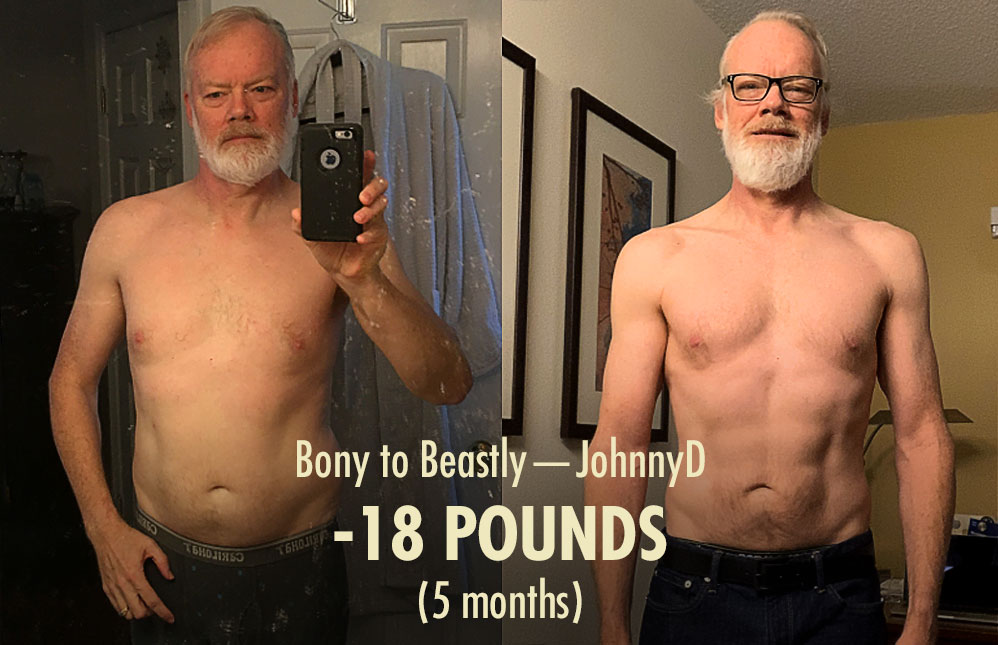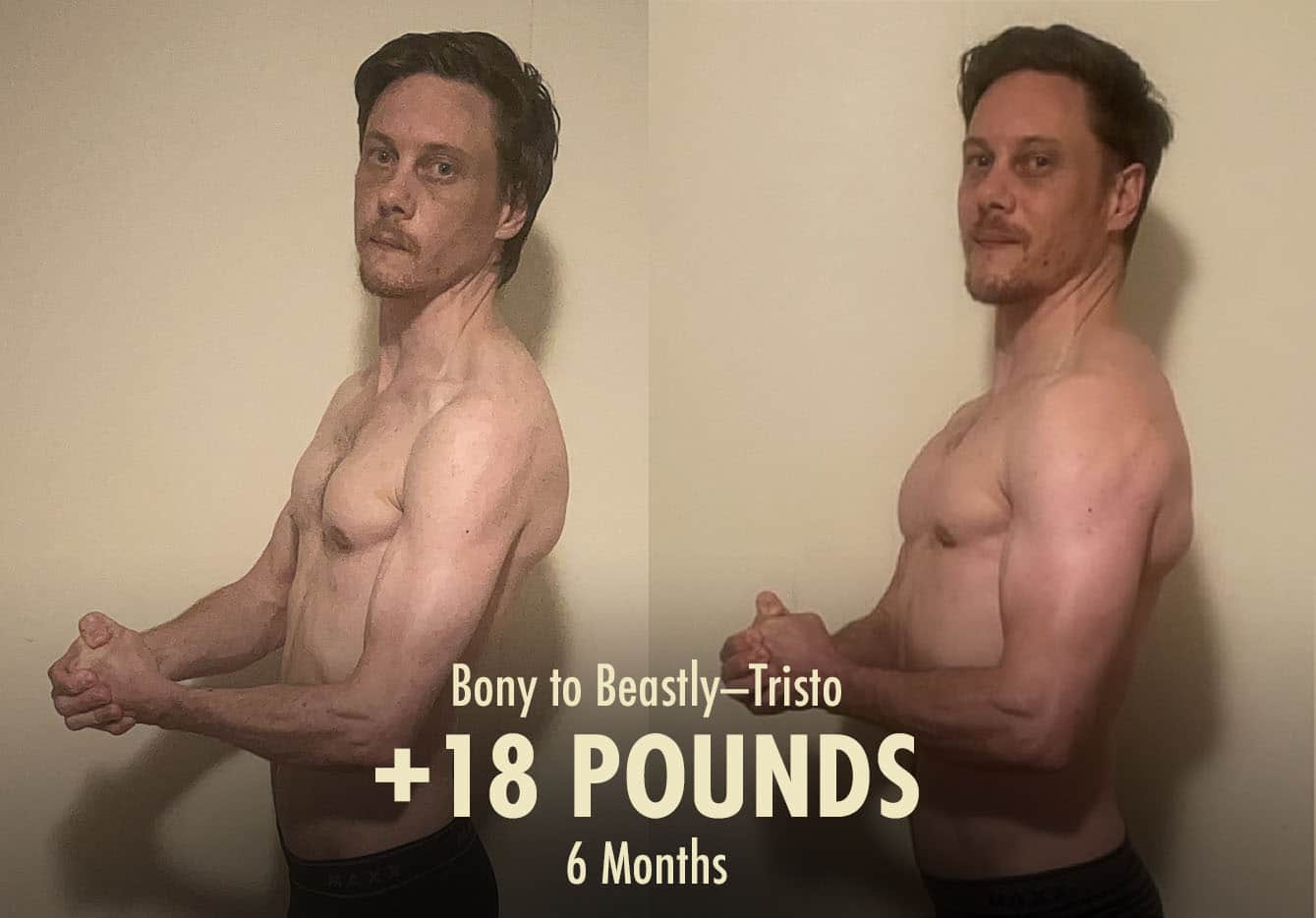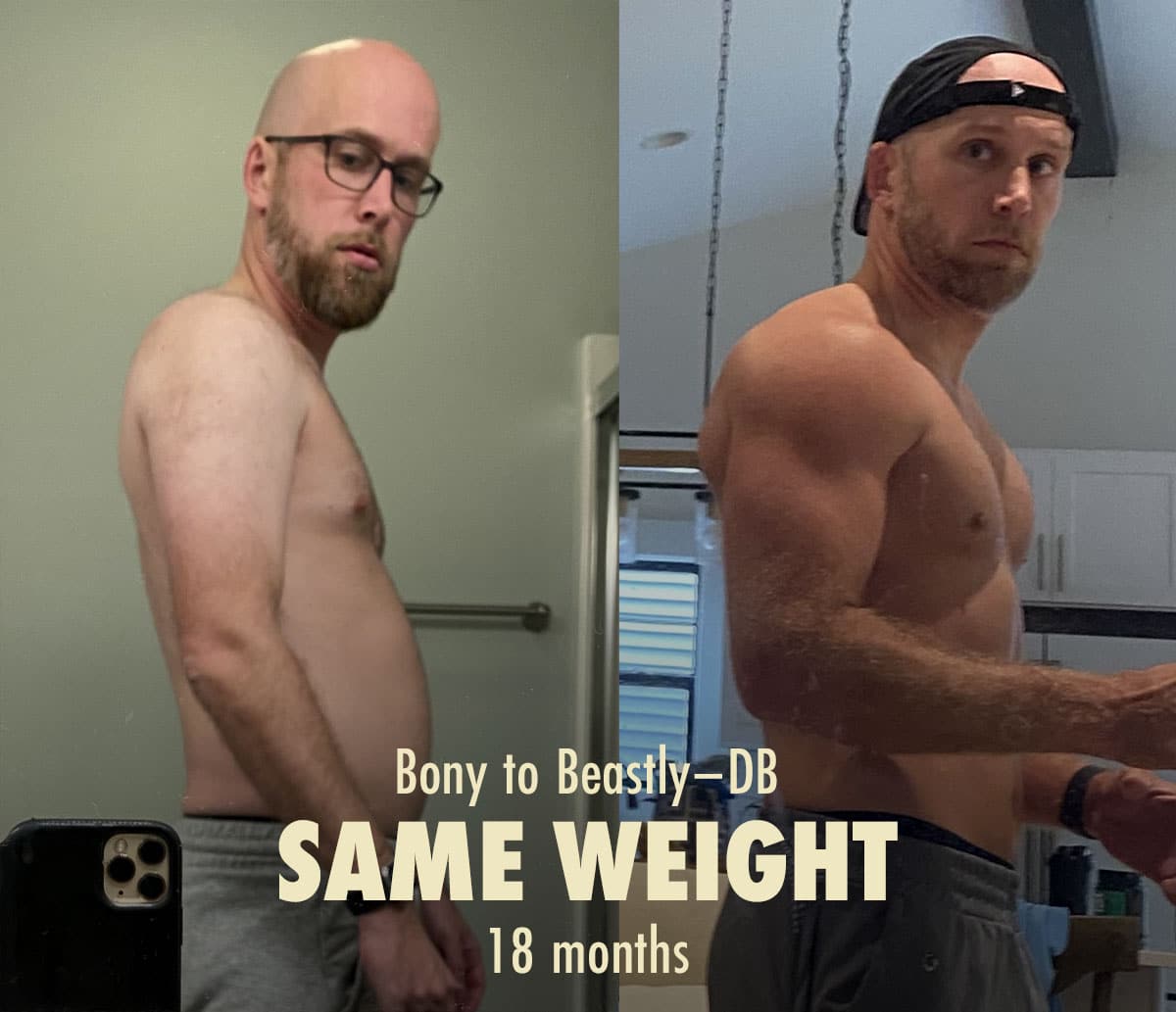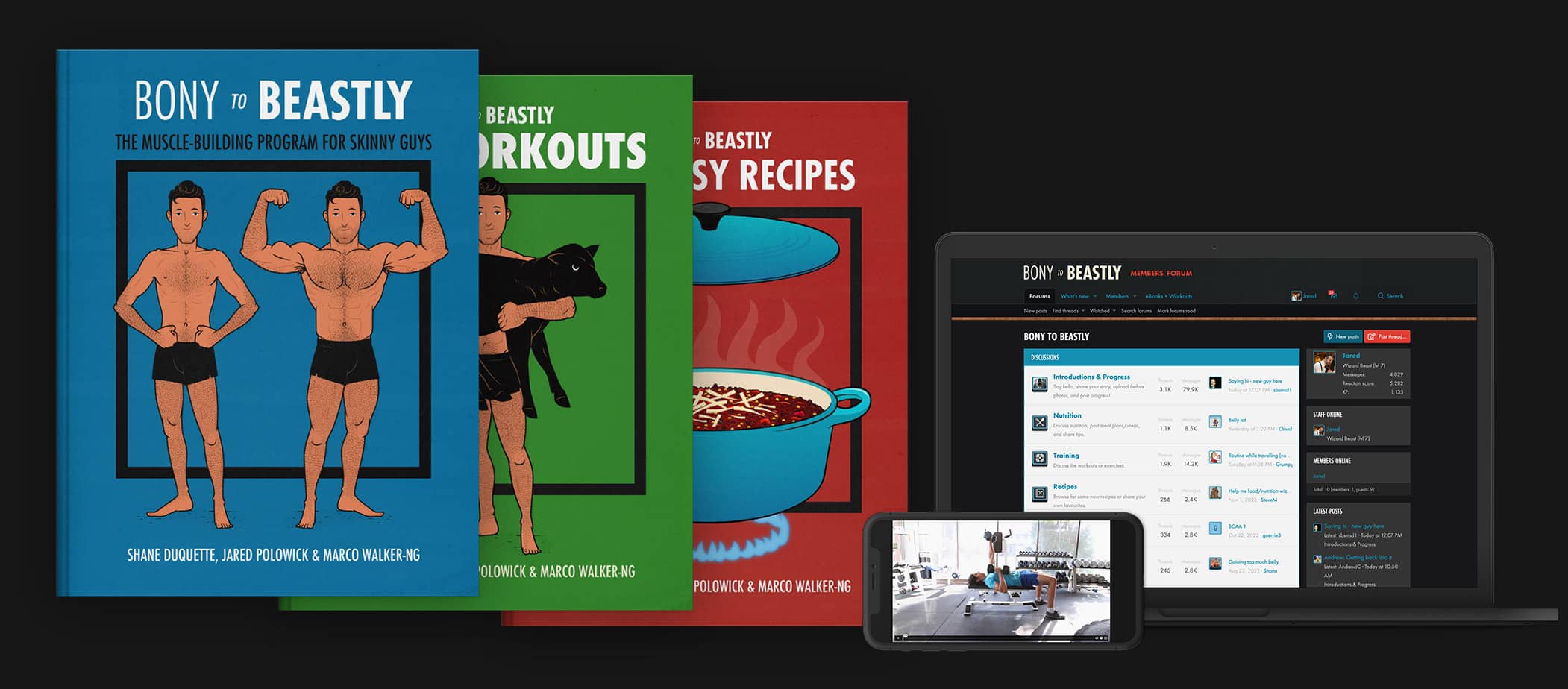Free Macro Calculator
Calories & Macronutrients
What Are Macros?
Macro is short for "macronutrients," the three main nutrients we use for energy:
- Protein gives us energy and amino acids, allowing us to make tissue (like muscle!), grow our hair and nails, produce enzymes, and form antibodies. It's found in foods like meat, seafood, nuts, seeds, dairy, eggs, grains, and legumes. It has 4 calories per gram. For example, a typical 200-gram skinless chicken breast has 63 grams of protein, a few grams of fat, and contains around 330 calories.
- Carbs are our primary energy source (unless you eat a ketogenic diet). They fuel our brain function, movement, and exercise. They're found in foods like fruits, vegetables, grains, legumes, honey, and dairy. They have 4 calories per gram. For example, a banana has about 25 grams of carbs and 100 calories.
- Dietary fat can be stored as body fat, giving us access to large amounts of energy. It supports cell membrane structure, assists in absorbing fat-soluble vitamins, and helps us produce hormones. It's found in foods like nuts, seeds, flesh, dairy, eggs, olives, avocados, and coconuts. It has 9 calories per gram, making it the densest of the macronutrients. For example, a tablespoon of olive oil has 14 grams of fat and 120 calories.
These three macros give us almost all of our energy, and we need minimum amounts of all of them to be optimally healthy. You could argue that we don't need carbs, and there's some truth to that argument, but carbs still benefit almost everyone, especially when trying to get leaner, stronger, fitter, or healthier.
We can also get energy from alcohol, which has 7 calories per gram. However, alcohol isn't (or at least shouldn't be) a major source of energy. You can also abstain from it completely without it harming your health. Thus, it isn't considered one of the three main macronutrients.
However, it does help to consider fibre. Fibre is a subcategory of carbohydrates, but it isn't fully digested, so we only get around 2 calories per gram. It's important for our health, though, because it feeds the beneficial bacteria in our guts, improving our digestion, immunity, and health.
Fibre is found in foods like fruits, vegetables, nuts, seeds, whole grains, and legumes. For example, a cup of blueberries has 84 calories, a gram of protein, 21 grams of carbs, and 4 grams of fibre.
Pro tip: If you try to multiply your grams of carbs to get a calorie total, it won't work because carbs can contain anywhere from 2 to 4 calories per gram.
How to Calculate Macros
First, we estimate how many calories you burn at rest (using the Cunningham Equation). Next, we estimate how many calories you burn while moving and exercising (an activity modifier). Then, we see whether you're trying to lose fat, build muscle, or do both at once (energy balance).
Once we have that data, we can divide up your calories between protein, carbs, fat, and fibre. Those macro recommendations will vary based on your goal. For example, when you remove calories to get into a calorie deficit, you still need to keep your protein intake high enough, meaning that your carb and fat targets need to get lower (study).
You can learn more about the specifics here:
You'll notice that we give minimum targets. That's because your body is flexible with the macros it can use for energy. It almost never matters whether you get 30% or 50% of your calories from carbs. That's totally up to you, and it can vary from day to day without affecting your health or results at all.
A common mistake is to try to get a macro as high or low as possible. For example, lifters often drive their protein intake as high as possible, even though the benefits cap out at 0.7–1 grams per pound of body weight per day. For another example, it's common to cut as many carbs as possible, even though carbs can be nutritious, improve your workout performance, and help you build more muscle.
Thus, for the best results, try to hit your minimum macro targets and stick fairly close to your calorie goal, but don't stress about hitting exact percentages of each macronutrient.
In fact, most people do fine by keeping a loose tally of how much protein they're eating and then letting their appetite naturally guide them toward a good balance of carbs and fat.
How We Calculate Calories
Most calorie calculators use your age, height, and sex to estimate how much fat and muscle you carry. Those extra variables make the calculators feel more personalized, but the opposite is true. They use that information to apply loose generalizations, making them less personalized.
For example, if you tell a calorie calculator you're old, it will assume you have less muscle. That's true on average, but if you lift weights, growing older allows you to accumulate more muscle mass. You'll be more muscular at 50 than at 20.
That's why this calculator asks for your weight and body fat percentage instead of your age, height, and sex. It still isn't perfect, but at least it's rooted in your actual stats. Then, we can refine it further.
Body-Fat Percentage
If you know your weight and have a rough idea of your body fat percentage, we can estimate how lean and muscular you are. This allows us to calculate your resting metabolic rate more accurately (using the Cunningham Equation).
If you're relatively lean, here's how to visually estimate your body fat percentage:
- 10% body fat: chiselled abs.
- 12% body fat: faintly visible abs.
- 15% body fat: flat stomach, maybe some upper abs.
- 20% body fat: flat stomach, maybe some love handles.
If you're over 20% body fat or don't want to guess, use this Navy body fat calculator. It estimates your body fat percentage using your height, weight, waist circumference, and neck circumference. It's accurate to within a few percentage points, making it far more accurate than BIA bathroom scales.
Lifestyle & Activity Levels
Once we know how many calories you burn at rest, we can factor in how active you are (using an activity multiplier).
- Sedentary: You spend almost all day sitting. This is common with deskworkers, students, and people who write articles about body recomposition. You should try to bump up into the next category if possible.
- Somewhat active: You spend most of your day sitting, but you also spend an hour or two walking around. Maybe you have kids or a dog. Your daily step count might be 5,000–10,000. This is a healthy minimum amount of physical activity, especially if you also exercise.
- Very active: You spend most of the day on your feet. Think manual labourers, personal trainers, athletes, and nurses. Your daily step count is probably far north of 10,000. This is great, but you don't need to force it.
Exercise (Workouts Per Week)
Any type of exercise counts as exercise, whether that's cardio or hypertrophy training. Cardio tends to burn the most calories, but a hearty bulking workout can still burn upwards of 300 calories per hour. We need to factor that in.
You can count any workout that's at least moderately intense. Don't count warm-ups, stretching, yoga, or walking the dog. Do count weight training, brisk walking, jogging, rucking, cycling, and other forms of cardio. Playing sports counts, too.
If the workout is half an hour or less, only count it if it's more intense. For example, 15 minutes of high-intensity interval training (HIIT) would count as a workout, whereas going on a 30-minute walk every morning doesn't count. (That's part of an active lifestyle.)
Diet Recommendations
The macro recommendations are the minimum amount of each macronutrient. You should have plenty of calories left over. You can spend those however you like. Most people spend them on carbs and fat.
We set a moderate protein target of 0.7–1 grams of protein per pound of body weight per day, depending on your goal. That's enough to maintain your muscle mass while cutting, build a little muscle while recomping, and maximize your rate of muscle growth while bulking.
We recommend protein sources like chicken, seafood, lean meat, nuts, seeds, beans, lentils, tofu, whole grains, eggs, and dairy. Protein shakes can help in a pinch (especially for vegans). You can have up to three protein shakes per day without any known negative impact on your health.
Carbs improve workout performance, energy levels, and muscle growth (as explained here). Most people benefit from eating plenty of them, but if you have a hard time losing weight, you could cut back, maybe even trying a ketogenic diet. I recommend getting most of your carbs from filling, fibrous sources like fruits, vegetables, whole grains, beans, onions, garlic, peppers, bell peppers, frozen berries, potatoes, and so on.
If you're eating in a calorie surplus to maximize muscle growth, you can benefit from eating more carbs. They'll pump your muscles full of extra glycogen, improving your workout performance and speeding up your rate of muscle growth. We'll give you a higher minimum target to hit.
A good rule of thumb is to eat at least ten grams of fibre per thousand calories. For example, if you're eating 3,000 calories, aim for at least 30 grams of fibre. You can eat more than that, though, especially if you work up to it over time. Fibre is great for your health and digestion, and it will keep you feeling full for longer. If you're having trouble losing weight, try gradually eating more fibre.
Fat is a valuable source of fat-soluble nutrients and is important for hormone production. The average person needs a minimum of around 45 grams per day, so the calculator won't ever recommend less than that. However, if you have the caloric budget for it, I'd rather you get at least 20% of your calories from fat. I recommend getting your fat from seafood, nuts, seeds, avocadoes, eggs, olive oil, and fermented dairy (like kefir, cheese, and yogurt). If you're having trouble losing weight, try cutting back on fats that aren't very filling, such as oil and butter.
How to Control Your Weight
This calorie calculator should do a pretty good job of estimating how many calories you should eat, but it isn't perfect, and your metabolism can adapt.
- There's a genetic component to metabolism. You might burn more or fewer calories than the average person.
- Your metabolism might be adaptive. Most people adapt to how many calories they're eating. When you eat fewer calories, your body can subconsciously adapt to make you slightly less active, saving more calories. When you eat more calories, you might become slightly more active, burning more calories.
- You can't perfectly track your calorie intake, and nutrition labels aren't perfectly accurate. For example, cooking with a bit of extra oil can add over a hundred extra calories, while leaving some olive oil in the pan when serving your food could remove over a hundred calories.
The solution is to weigh yourself every week and adjust accordingly. Add calories if you're losing weight or struggling to gain strength. Remove calories if your waist measurement is going up.
SHould You Track Your Calories?
You don't need to track your macros. Most people intuitively eat about enough calories to maintain their weight from week to week. If you want to recomp, keep eating according to your appetite, but focus on exercise and diet quality. To shift into a calorie deficit, you can eat a bit less. To shift into a calorie surplus, you could eat a bit more.
Whatever your goal is, we recommend weighing yourself once per week under similar conditions. For example, first thing every Sunday morning. That way, you'll know how your weight is changing, and you can eat a little more or less if needed.
But tracking your calories can definitely help. I did it for a few months almost a decade ago, and I'm still benefitting from it now. It taught me an incredible amount about my eating habits and the calorie content of food. I think everyone should try it at least once.
If you want to try tracking your macros, we're affiliated with Macrofactor. We tested all of them, and it's quite a bit better in three key ways:
- It's great for both losing fat and building muscle.
- It uses a verified food database, making it far more accurate than cheap trackers.
- It automatically adjusts your calorie targets based on how quickly you're gaining or losing weight. (This makes it the only macro tracking app that can guarantee steady progress.)
We've used it ourselves and with hundreds of clients over several years. It's great, and it's constantly getting better. We have a full review here.
You can get an extended free trial of Macrofactor with the code "b2b". Try the app and see if you like tracking your calories. Not everyone does. It's a lot of work, especially during the first few days. Get through those first few days and then decide if you want to continue.
Hypertrophy Training
Hypertrophy training is a style of training designed to stimulate muscle growth. It's what tells your body to get rid of fat and/or build muscle. Without it, you'll lose muscle while losing weight and gain fat while gaining weight. With it, you'll get bigger, leaner, stronger, fitter, and healthier.
If you're building muscle, you should be able to add weight or reps to most of your exercises most weeks. If you're getting stronger, you're doing great. Keep it up.
If you aren't getting stronger, there are a few things you can do:
- Make sure you're following a really good hypertrophy training program, like this one for novices or this one for intermediates. A good workout routine is the most powerful way to encourage your body to spend energy from fat to build muscle.
- Make sure you're eating enough protein. Maybe try eating a little bit more. Some people need more.
- Make sure you're eating a good muscle-building diet.
- Try to get enough good sleep every night.
The Bony to Beastly Program
If you want a full fat loss and muscle-building program, including a 5-month workout routine, a diet guide, a recipe book, and online coaching, check out our Bony to Beastly Bulking Program. Or, if you want a customizable intermediate hypertrophy program, check out our Outlift Program. You can use either of these programs for bulking, cutting, or recomping.
Alright, that’s it for now. If you made it this deep into the article, you might like our newsletter.




